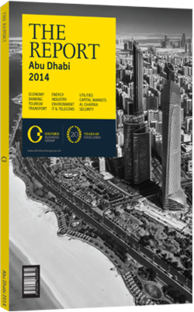Food for thought: The authorities are keen to attract new investment to the sector and boost output
Agriculture has long been a mainstay of the Al Gharbia region’s economy and among its chief employers. In the coming years, new projects will build on this agricultural base, moving into a variety of different areas and bringing additional value to the sector through the production of processed and finished goods.
Agricultural Production
With ties to the region’s ancestral heritage and traditions, Al Gharbia’s agricultural sector produces livestock, meat, milk, fish, dates and vegetables. Agricultural activities within the region include research and development tied to arid environment farming, fish farming, traditional fishing, livestock husbandry, food processing and traditional vegetable and date farming.
Al Gharbia accounts for around 28% of the total farmland in the emirate, according to figures from the Statistics Centre - Abu Dhabi (SCAD), and its agricultural produce comprises dates, date syrup, camel milk and meat, fish and a variety of vegetables. Fruits account for the largest area under cultivation in the region, with 82,409 donums (one donum is equal to 1000 sq metres) out of a total cultivated area of 210,458 donums in 2012, according to figures from SCAD’s “Abu Dhabi Statistical Yearbook 2013”. Both the volume and the value of output from the date industry in Al Gharbia have increased in recent years. In 2012 it produced Dh218.2m ($59.4m) worth of dates, up from Dh176.1m ($47.9m) in 2011, while the volume of output rose from 22,065 tonnes in 2010 to 24,320 tonnes in 2011 and 26,520 tonnes in 2012. The livestock segment has also been growing, with the number of sheep, cattle and camels reaching 530,614 in 2012, up from 343,140 in 2005.
The agricultural sector is expected to contribute a total of Dh2.5bn ($680.5m) by 2020. To that end, Plan Al Gharbia 2030 emphasises opportunities within the sector arising from a focus on regional cuisine as well as sustainable farming techniques.
The Western Region Development Council (WRDC) has been working to secure a number of private investments that will support the expansion of the food sector in Al Gharbia as well as benefit local communities. In Liwa, for example, the organisation has been working to bring in investors to develop infrastructure in the poultry farming sector – such as hatcheries and slaughterhouses – to allow local farmers and businesses to benefit from their production.
Fish
A similar structure is being developed in the fisheries sector in conjunction with the International Fish Farming Company (ASMAK). The firm announced two projects in 2012. The Land-Based Recirculation Aquaculture System (RAS) farm will have a capacity of 4000 tonnes, including a hatchery with a production capacity of 30m juveniles per year. Construction for the farm, covering 500,000 sq metres, will be completed by the end of 2014, producing species including hammour, barramundi, sea bream and subaiti. ASMAK is also developing a 250,000-sq-metre offshore sea cage farm at Dalma Island with a production capacity of 800-1000 tonnes per year. The RAS farm will include a small fish farm cluster, allowing the development of 50 small and independent farms to produce up to 100 tonnes of sea bream and hammour, as well as rare species, each year.
WRDC Role
This is a central component of WRDC’s development model. The council wants to attract large-scale investors to help develop the infrastructure that will then allow small-scale local businesses to flourish and contribute to the sector’s overall development.
You have reached the limit of premium articles you can view for free.
Choose from the options below to purchase print or digital editions of our Reports. You can also purchase a website subscription giving you unlimited access to all of our Reports online for 12 months.
If you have already purchased this Report or have a website subscription, please login to continue.

